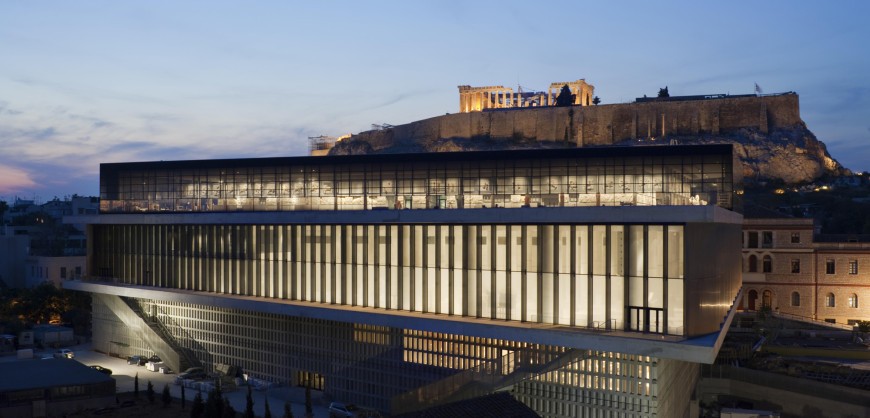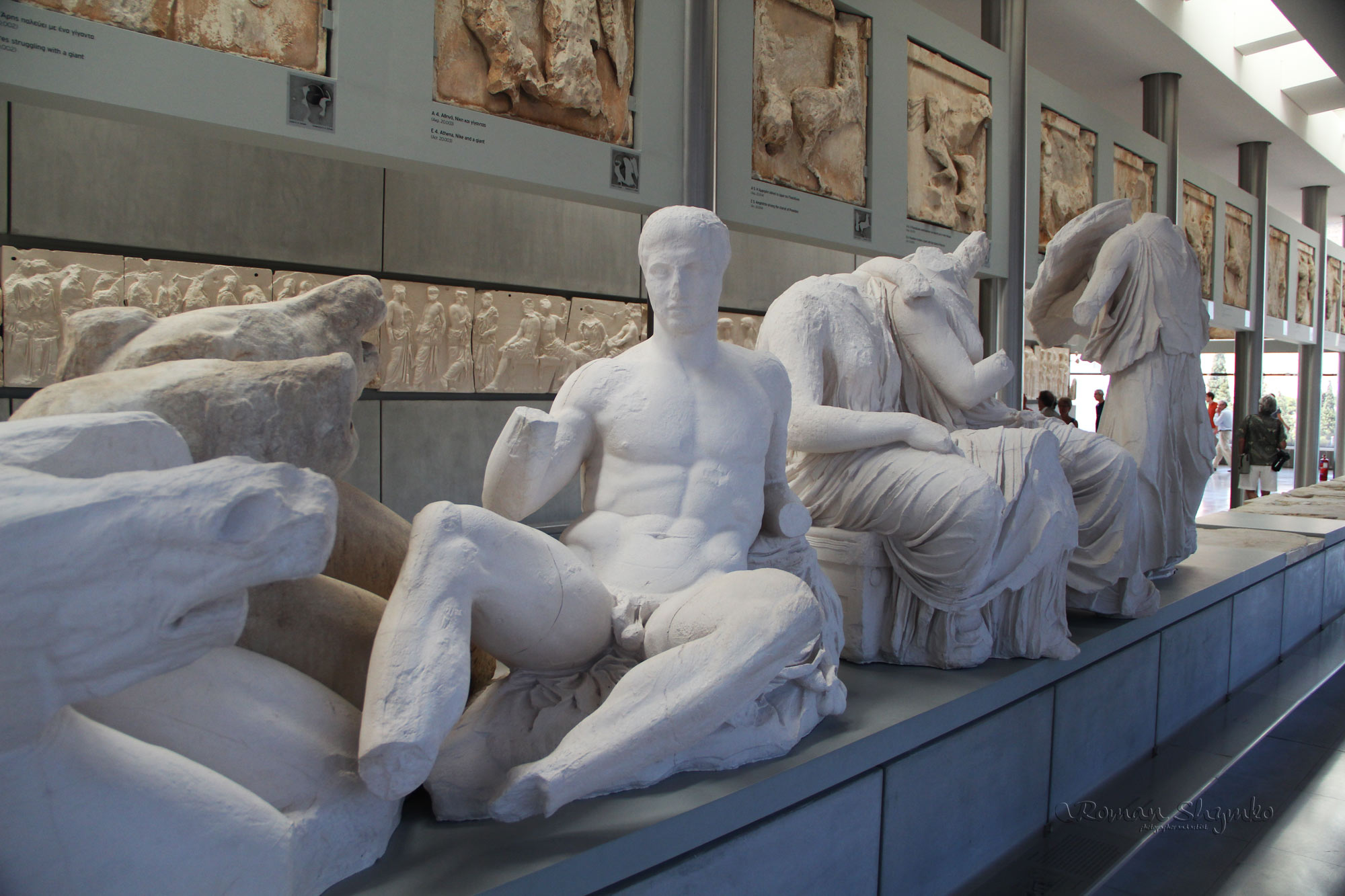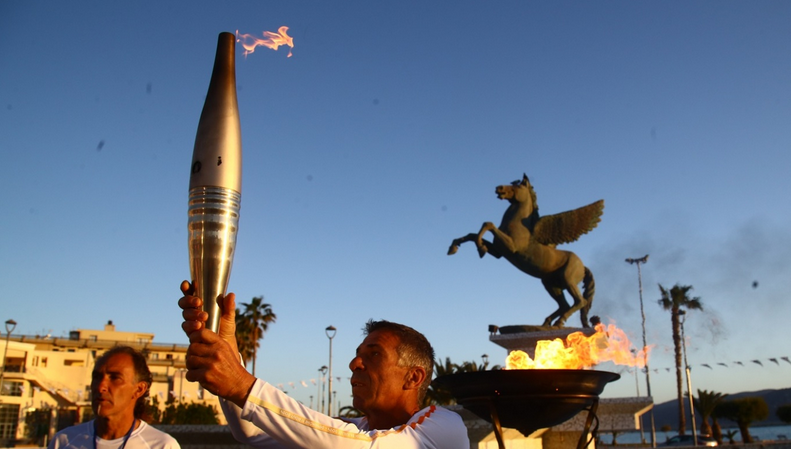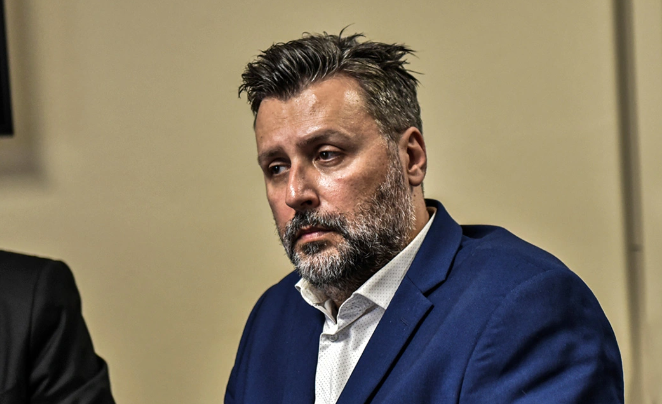The Acropolis Museum announced its new program for the presentations and guided tours to take place every Saturday afternoon until June. Through selected exhibits presented by archaeologists and hosts of the museums visitors can learn about interesting aspects of antiquity such as the assembled art, the sacred caves of the Acropolis, the Erechtheion and much more.
The talks are free and in Greek but are also available in English upon request.
The Acropolis Museum is at 15 D. Areopagitou Street, near the Parthenon. Telephone 210 900 0900.
Saturday, November 1, 1 p.m.
Assembled Art
The three-dimensional art of Athens was not made exclusively from a single piece of material, nor from only one type of material, e.g. stone, terracotta or metal. A variety of members from the same or different materials bound together in a harmonious ensemble, were used for its production in different sizes and for various purposes. Visitors will be able to talk with the Archaeologist-Hosts about the ancient representatives of this art to be found at the Museum in a range of sizes, such as puppet dolls, idols, acroliths and chryselephantine statues, as well as their various functions in an ancient sanctuary. Duration: 50 minutes
Saturday, November 8, 1 p.m.
The Erechtheion: The identity of Athens
Ancient mythical figures left their mark on the most ancient cult site on the Acropolis, that of Athena Polias. The Erechtheion, a remarkable building, was the last temple to house this significant cult. Together with the Museum’s Archaeologist-Hosts, visitors will explore the unique character of this temple through its architectural, decorative, and religious features, and discuss its later history. The presentation will be enhanced by the use of models and digital tablets.
Saturday, November 15, 1 p.m.
The Caves of the Acropolis
Cavities of varying size in the limestone rock of the Acropolis offered refuge to the cults of important gods and heroes of ancient Athens. Visitors will “invade” the remote regions of the Acropolis caves and discuss the people who used them, both ancient and of later periods, with the Museum’s Archaeologist-Hosts.
Saturday, November 22, 1 p.m.
Figures in Clay: Terracotta statuettes and the relief panels of the Acropolis Museum
Ancient coroplastic art – the modelling of terracotta figures – is a widely used art which allows for the production of replicates. Its remnants reflect the number of users throughout the ancient Greek world, and the many ancient visitors to the temples of the Acropolis. The figurines and relief panels in the Museum’s exhibition spaces make a distinct impression with their faded colours, variety, and often direct, frontal communication with the modern viewer. Visitors will have the opportunity to explore the details, production techniques, and the research and dating methods used for these objects, as well as the fascinating world they reveal, together with the Museum’s Archaeologist-Hosts.
Saturday, November 29, 1 p.m.
The Kritios Boy and the Severe Style
Can a work of art speak to us about an artist, a whole period, and the way in which we research the ancient world, as well as about contemporary ideas? Using one of the Museum’s most important exhibits – the marble adolescent attributed to the sculptor Kritios – as a starting point, visitors can study this uniquely shaped marble, and discuss the artist, his period, changes in art, and ancient and modern aesthetics.
Saturday, December 6, 1 p.m.
Serving the gods: The People of the Sanctuary
Were there people who ensured that ancient sanctuaries operated correctly? What sorts of roles were performed by the people whom ancient visitors to sanctuaries of the Acropolis might have encountered? Today’s visitors will have the opportunity to discuss
with the Archaeologist – Hosts, the personnel who either directly or indirectly and regularly or on the basis of special need, contributed to the smooth management of worship in the shrines of the Acropolis, based on ancient representations and inscriptions in the Museum. The talk will be enhanced by the use of magnifying lenses and written sources presented on digital tablets.
Saturday, December 13, 1 p.m.
The Sanctuary and Society
Is the shape of society in every era reflected in the objects associated with its
members? Political systems and social stratification, economic diversification, professional expertise, and many others topics will be the subject of a discussion with the Archaeologist-Hosts, held among the Museum’s exhibits, and with the aid of rich visual material.
Saturday, December 20, 1 p.m.
The Athenians and others at the Acropolis Museum
The ancient world, like the modern, was a world of contact between peoples and civilisations. How did the ancient Athenians view themselves in this diverse
environment? How did they define others in relation to themselves? A discussion with the Museum’s Archaeologist-Hosts, held among the remains of the Acropolis sanctuary, about the presence of “foreigners” in ancient Athens through time. Visitors will also
come into contact with the ways in which the Athenians expressed their views of foreigners in their art, as well as the external influences on the culture of Attica and Attic influence abroad.
Saturday, January 10, 1 p.m.
Building the Acropolis: The Accounts
Among the sources for the ancient world which we are fortunate enough to have knowledge of, building accounts have a special place. Research on the Acropolis has yielded a number of such texts which testify to details of the construction or repair of both buildings and statues of the Acropolis. Visitors will be able to read these ancient marble testaments to the administration of public funds, at the Museum. They will discuss the needs which prompted their inscription in stone and their public display, and the channels that they open in our knowledge about the various aspects of ancient life. The presentation will be enhanced by the use of magnifying lenses and written and pictorial sources on digital tablets.
Saturday, January 17, 1 p.m.
Why is the Parthenon considered an exceptional monument of world cultural heritage? Why did it grab the attention of both its earlier and current viewers to such a degree? Visitors will discuss issues related to this celebrated monument’s architecture, its decoration and the way in which it is exhibited, its symbolism and its history,with the Archaeologist-Hosts. They will also be able to observe its unsurpassed sculptures from up close, and to admire the temple itself in its natural environment th
rough the transparent wall on the Museum’s third floor. The presentation will be enhanced with the use of models and digital tablets.
Saturday, January 24, 1 p.m.
What did the ancient Athenians eat and drink? What were their local products and what products did they import into their markets? How and where was their food produced? What was the relationship between food and worship in ancient Athens? Visitors will explore all the above issues and current methods of investigating the ancient diet, among the exhibits which reflect it.
Saturday, January 31, 1 p.m.
Metal Objects at the Acropolis Museum Gold, silver, iron and copper were metals in the service of people and the gods in ancient Athens. In the Museum’s artefacts meta often takes unexpected forms. The few metal objects which have survived until the present and references to them in written testimony, as well as openings in stone which once hosted metal attachments will form the basis of a discussion on the processing and use of metals in ancient times and their relationship with cult. The presentation will be enhanced by video projections about reconstructions of lost metal attachments on marble artefacts and exhibit casts.
Saturday, February 7 – Famous Personalities of the Acropolis
Saturday, February 14 – The World of Performances
Saturday, February 28 – Zeus and the Acropolis
Saturday, March 7 – Women at the Acropolis Museum
Saturday, March 14 – The Panathenaic Festival
Saturday, March 21 – Sanctuary and War
Saturday, March 28 – Taming Stone: Sculptors and Builders at the Acropolis Museum
Saturday, April 4 – Fabrics in the Artistic Material
Saturday, April 18 – Foreign Policy and the Sanctuary
Saturday, April 25 – Artemis and the Acropolis
Saturday, May 9 – Hermes and the Acropolis
Saturday, May 16 – Images, Beliefs, Cult
Saturday, May 23 – Aphrodite and the Acropolis
Saturday, May 30 – The element of water at the Acropolis Museum
Saturday, June 6 – Nature at the Acropolis Museum: Animals
Saturday, June 13 – Nature at the Acropolis Museum: Plants
Saturday, June 20 – Music, dance and the Acropolis



































